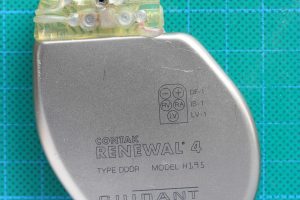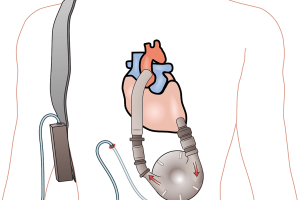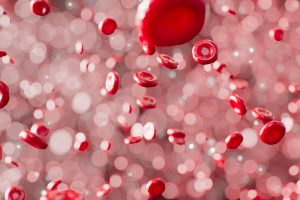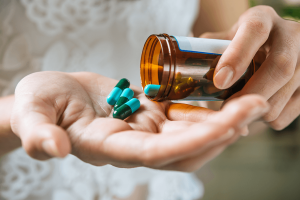The heart never takes a break. The heart is a strong muscle that never stops exercising, not for a minute. Every minute it needs blood, nourishment and oxygen. At Amarillo Heart Institute, we understand the importance of keeping your heart healthy and functioning at its best. We believe that a healthy heart is the foundation of a healthy life, and our goal is to provide you with all you need to achieve optimal heart health, a happier heart.
PAcemaker Insertion
Pacemakers are medical devices that help regulate the heartbeat of people who have an irregular or slow heartbeat. These devices send electrical impulses to the heart muscle to make it beat at a normal rate. Pacemakers consist of a generator and one or more leads. The generator is a small metal case that contains a battery and electronic circuitry. The leads are thin, flexible wires that are attached to the heart muscle and carry electrical signals between the generator and the heart.
Conditions treated
Bradycardia: This is a condition where the heart beats too slowly, usually fewer than 60 beats per minute.
Atrioventricular (AV) block: This is a condition where the electrical signals between the atria and ventricles of the heart are blocked or delayed.
Sick sinus syndrome: This is a condition where the sinus node, the natural pacemaker of the heart, does not function properly.
Heart failure: This is a condition where the heart is weakened and unable to pump blood efficiently.
The benefits of pacemakers are numerous. They can regulate the heartbeat, improve blood flow to the body, increase energy levels, and reduce the risk of complications associated with an irregular heartbeat, such as stroke or heart failure. Pacemakers can also allow patients to resume their normal activities and improve their overall quality of life.
Types of pacemakers
There are three types of pacemakers based on the number of chambers they regulate: single chamber, dual chamber, and biventricular pacemakers.
single chamber
Single chamber pacemakers regulate the heart’s rhythm in one chamber of the heart, usually the right ventricle. They are most commonly used to treat bradycardia, which is when the heart beats too slowly. Single chamber pacemakers have one lead that is placed in the right ventricle of the heart. The pacemaker senses the heart’s natural electrical activity and delivers an electrical impulse to the right ventricle to stimulate a heartbeat when necessary.
dual chamber
Dual chamber pacemakers regulate the heart’s rhythm in two chambers of the heart, usually the right atrium and the right ventricle. They are used to treat bradycardia with atrioventricular (AV) block, which is when the electrical signals between the atria and ventricles are blocked or delayed. Dual chamber pacemakers have two leads that are placed in the right atrium and right ventricle of the heart. The pacemaker senses the natural electrical activity of the heart and delivers electrical impulses to both chambers to regulate the heartbeat.
biventricular pacemaker
Biventricular pacemakers, also known as cardiac resynchronization therapy (CRT), regulate the heart’s rhythm in three chambers of the heart: the right atrium, the right ventricle, and the left ventricle. They are used to treat heart failure, which is when the heart is weakened and unable to pump blood efficiently. Biventricular pacemakers have three leads that are placed in the right atrium, right ventricle, and left ventricle of the heart. The pacemaker coordinates the timing of electrical signals in the heart, which can improve the heart’s pumping function and reduce symptoms of heart failure.
how to diagnose a pacemaker
Pacemakers are usually diagnosed after a patient undergoes a series of tests that measure their heart’s electrical activity. These tests may include an electrocardiogram (ECG), a Holter monitor, or an event monitor. If these tests show that a patient has an irregular or slow heartbeat, their doctor may recommend a pacemaker.
Patients who need pacemakers may experience symptoms such as fatigue, dizziness, fainting, shortness of breath, or chest pain. These symptoms can significantly impact a patient’s quality of life, and a pacemaker can help alleviate them.
What to expect upon a pacemaker insertion
Before pacemaker insertion, patients will undergo a series of tests to ensure that they are suitable candidates for the procedure. The procedure itself is usually done under local anesthesia, and the patient can return home the same day or the next day. After the procedure, patients will need to avoid strenuous activities for a short period of time and attend follow-up appointments with their doctor to ensure that the pacemaker is functioning properly.
The insertion of a pacemaker is a minimally invasive surgical procedure that typically takes about 1-2 hours. The patient is usually given local anesthesia, and the pacemaker is inserted through a small incision in the chest. The leads are threaded through veins into the heart, and then attached to the pacemaker. After the procedure, the patient is monitored for several hours and may stay in the hospital for a day or two.
It is important for patients to discuss the risks and benefits of pacemaker insertion with their doctor and to ask any questions they may have about the procedure. Patients should also inform their doctor of any medications or medical conditions they have, as these may affect the pacemaker’s performance.
In summary, pacemakers are medical devices used to regulate the heartbeat of people with an irregular or slow heartbeat. They are used to treat a variety of heart conditions, and their benefits include improved energy levels, reduced risk of complications, and improved quality of life. Patients who are considering pacemaker insertion should discuss the risks and benefits with their doctor and ask any questions they may have about the procedure.












